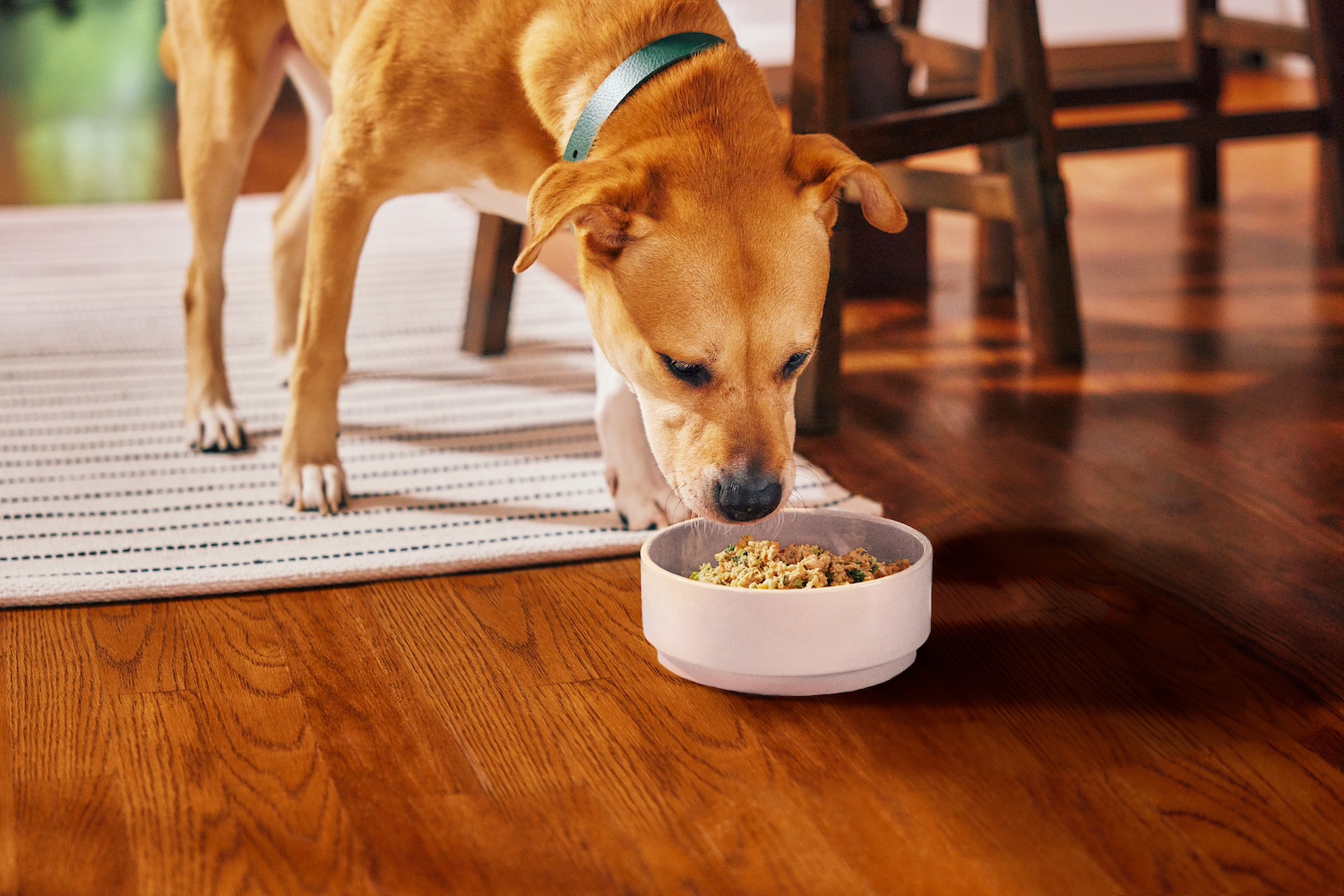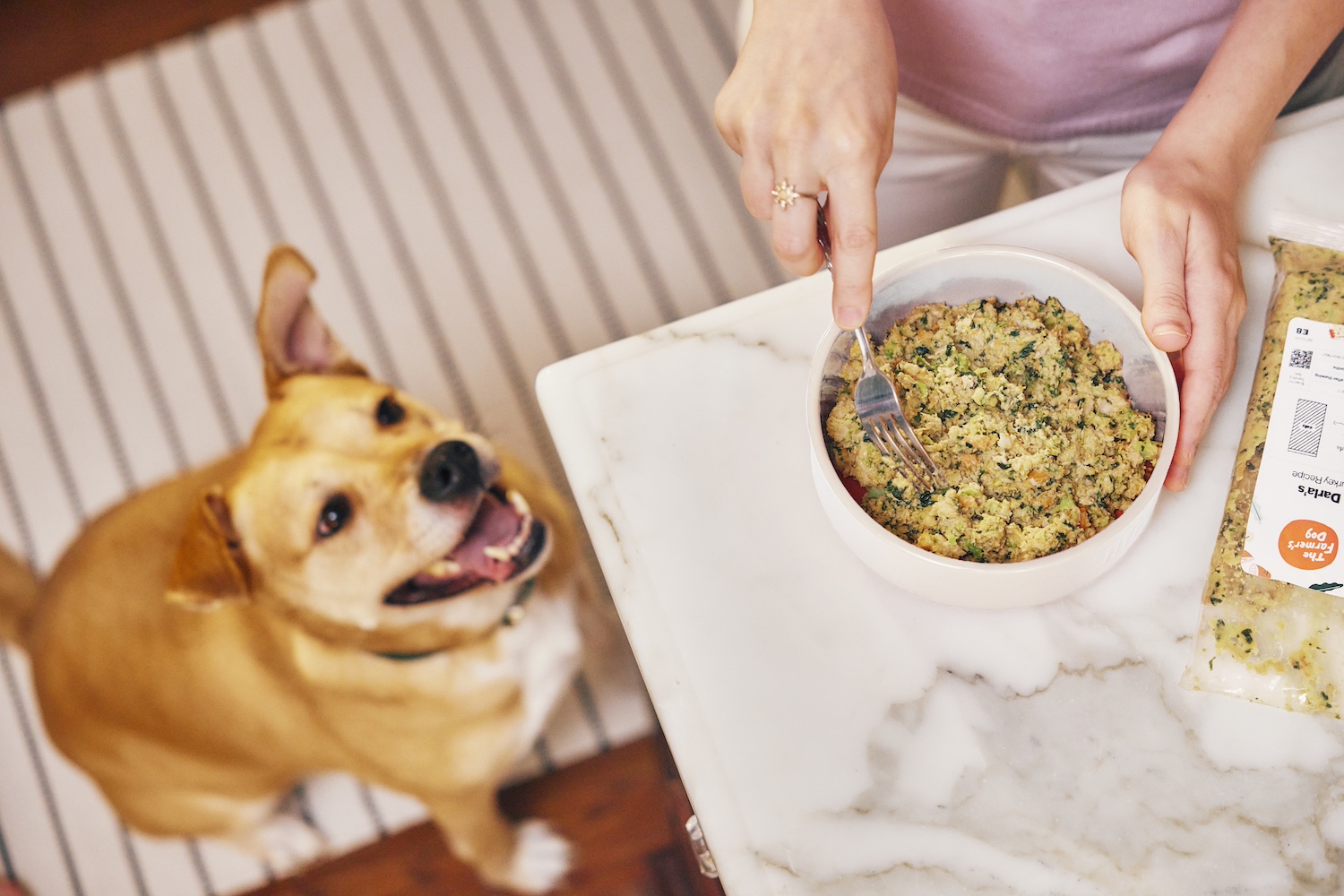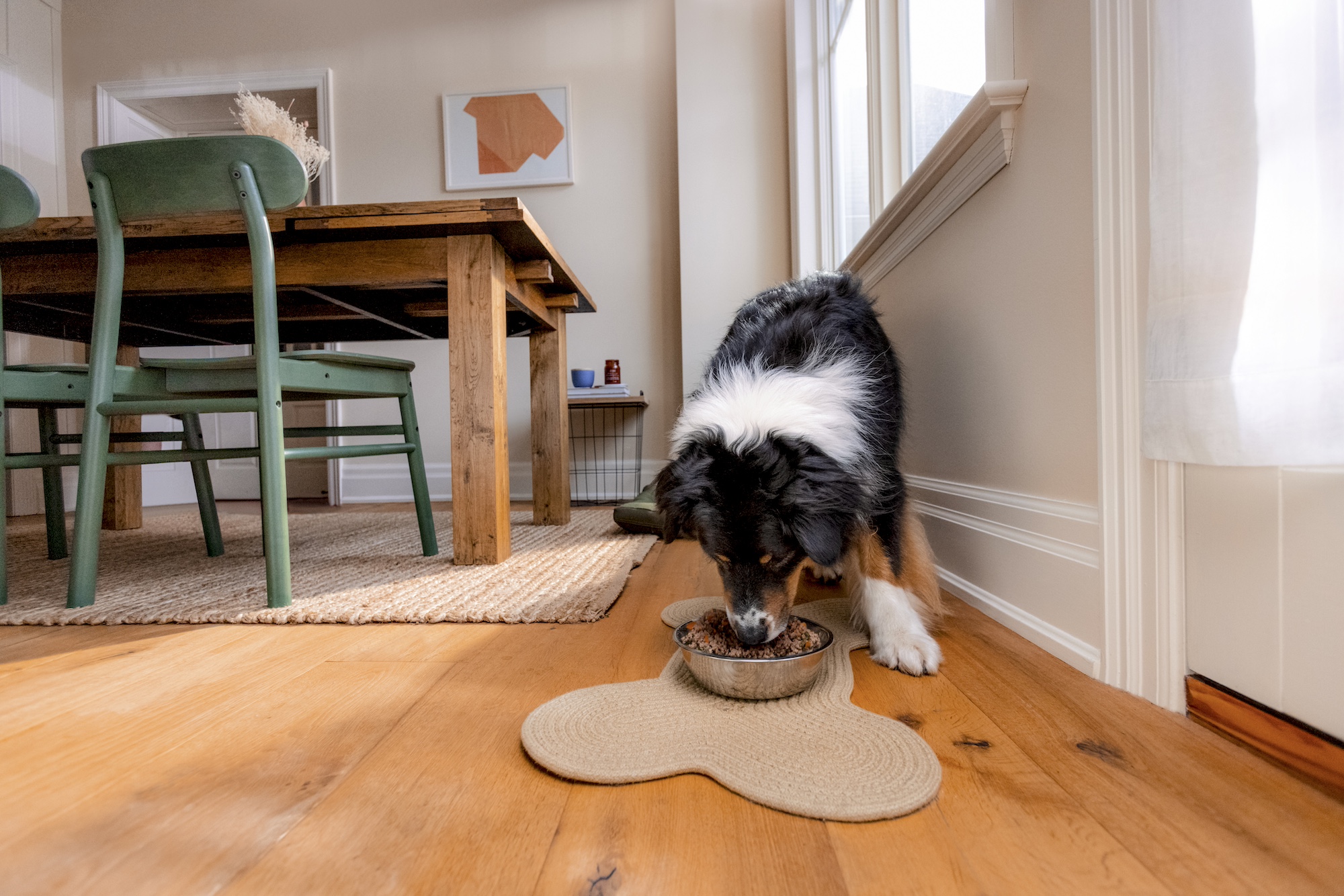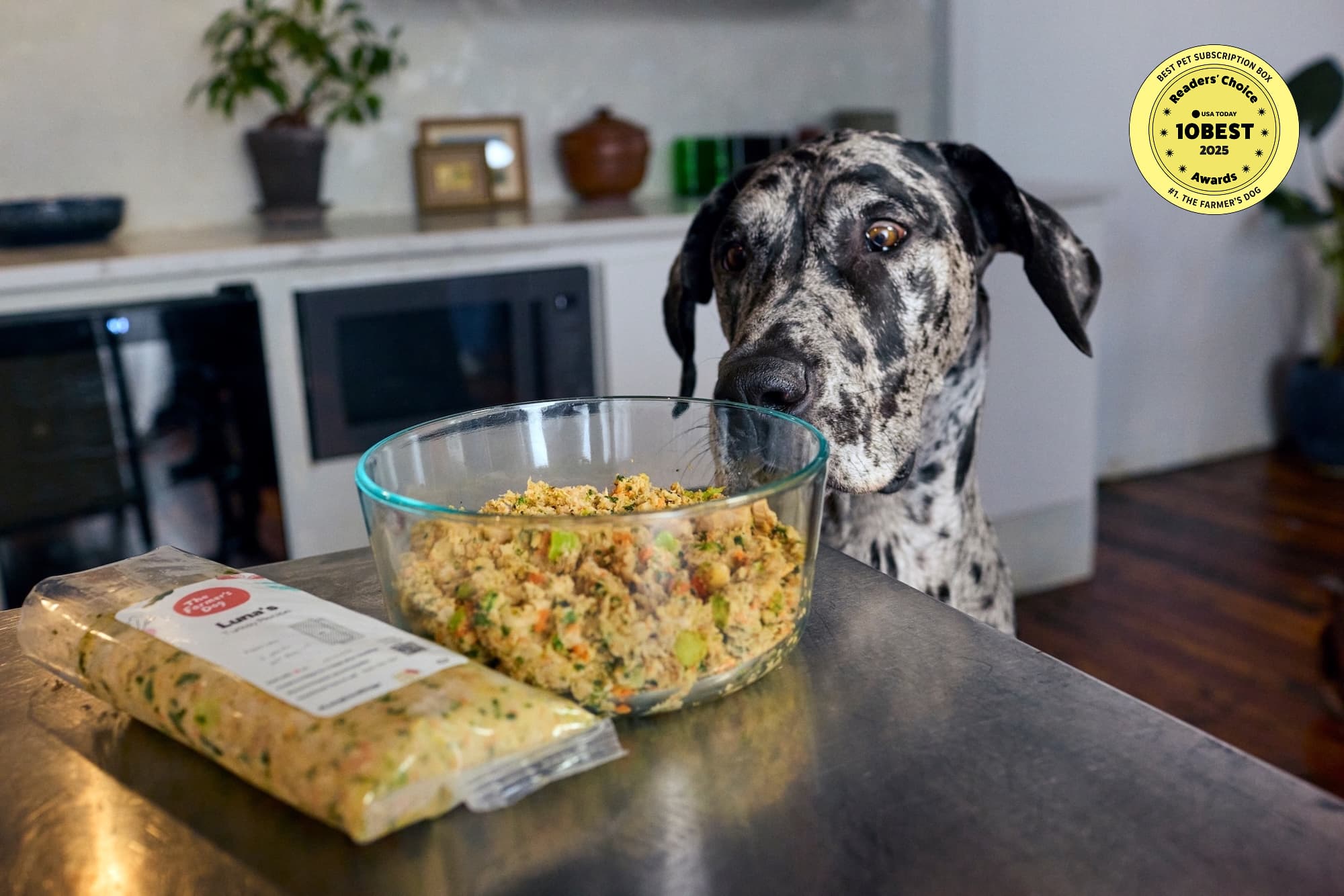We tend to think of dogs as voracious eaters who’ll consume anything in their path. And many people who have just switched their dog’s diet to fresh food report that their dogs file loud complaints if a meal arrives even a minute or two late.
Even so, if you’ve just made a diet change, it can take some dogs a minute to acquire a zeal for meals. We understand how frustrating this can be. But the good news is that there are some easy, accessible ways to stoke your dog’s appetite.
Here’s what to know about so-called “picky eating,” and how to help a dog overcome it and embark on a lifetime of happily eating fresh food from The Farmer’s Dog.
“We were never able to find a food that Bosco liked, including making it ourselves. Everything changed with The Farmer’s Dog. At first, he didn’t eat every day—but we continued the plan and now Bosco eats twice a day. No food wasted and a healthy dog. Thank you so much!”
— Bosco’s person
Fresh food can help
If you’ve just made the switch to fresh, whole food, you’re on the right track—dogs often prefer a fresh diet, and third-party research has found that our fresh food is more palatable than leading kibble brands by more than a 2-to-1 margin.
And that’s only one benefit of switching to The Farmer’s Dog, which is also better for digestion and weight management.
However, just because fresh food is tastier and has many health benefits doesn’t mean that it will solve every picky eater’s problems on its own. And a change in diet can give even enthusiastic eaters pause due to factors like unfamiliar textures and tastes. There’s more you can do to reignite your dog’s appetite.

Patience is a virtue
If your dog isn’t finishing all their food in the first few days after you switch to fresh, don’t give up hope. We’ve seen many dogs go from hesitant to total chowhounds—and the tips below can be a big part of making that happen.
Good human habits
Even with the healthiest, most palatable diet, bad habits around feeding can impact your dog’s appetite or willingness to eat. As your dog’s caretaker, your choices can help them get into a better rhythm of eating the right amount of the right food at the right time.
Try taking these steps:
Stick to scheduled mealtimes—don’t free-feed. Whether you feed your dog once, twice, or more times per day, be sure to feed them the same amount at the same times. This means you shouldn’t free-feed (which means leaving food out over the course of a day and allowing your dog to graze at will). Free-feeding can send a dog the message that food is available all the time, so they can take it or leave it when it shows up. Food that’s been out too long can also develop an “off” smell or taste, which can lead to a long-lasting food aversion.
Another problem with free-feeding is that you may be less aware of when, and how much, your pet last ate. That can make it harder to spot subtle changes that let you know they need to see the vet.
Scheduled feeding can also help you control your dog’s weight over the long run by making it easier to keep track of their precise calorie intake, and is much better from a food-safety standpoint.
If your dog has not finished a full meal after 30 minutes, you can put their food back in the fridge until they’re hungry. If there’s any food left after another 30 minutes of it sitting at room temperature, we recommend disposing of it. Since our food is fresh, we do not recommend leaving it out indefinitely—once it’s been out that long, re-cooling won’t make it safe again.

Give your dog a safe, comfortable, reliable place to eat. Distractions or sources of stress near a food bowl—loud noises or kids trying to play with the dog, for example—can interfere with a dog’s eating. Make sure they have a quiet, pleasant place for their meals, and feed them in the same place each time to develop a comfortable routine.
Feed the right amount. Overfeeding is a no-no on multiple levels. Not only will a dog be less likely to eat their complete and balanced food if they already feel full, but overfeeding can and often does lead to weight gain, which in turn can lead to a range of health problems. Dogs who are overweight have worse health outcomes on average than lean dogs. A study has shown that dogs in lean body condition can live up to 2.5 years longer than those who are overweight, so it’s well worth being precise when feeding your dog.
The Farmer’s Dog food is pre-portioned for each dog’s individual caloric needs, making it easier for you to give your dog exactly the correct helping of food. Bags of kibble, by contrast, often feature vague serving suggestions corresponding to broad weight ranges and measured in scoops. Because fresh food is more calorically dense than kibble, the amount of food in your dog’s bowl may look smaller than you’re used to—but as long as your dog is energetic and maintaining a healthy body condition, it’s enough! If you do notice that your dog is losing weight, it’s simple to adjust their plan (and our customer experience experts are on hand to help if you’re not sure if you should increase their daily portions).
Don’t rely on toppers. It’s okay if, in a pinch, you occasionally add a dollop of something more enticing to your dog’s food to get them to eat—but try not to make it a regular occurrence. If you use toppers routinely, you run the risk of your dog being too focused on the topper and less interested in the complete and balanced food they should be eating every day. And if your dog once had a good appetite and now commonly needs extra encouragement to eat, that could be an early indicator of a health issue that requires a vet visit.
Keep your dog’s bowls clean. If you haven’t been religious about cleaning your dog’s food and water bowls, you’re not alone. A 2022 study found that most pet owners didn’t wash their dog’s bowls as often as they should. But it’s best for your dog’s health to clean your dog’s food bowls after each use, and their water bowls every day. This is important no matter what food you’re feeding, but may be even more crucial when your dog is eating real food without preservatives. You wouldn’t eat your own fresh food off of the same unwashed plate, meal after meal—and it’s not safe for them to do so, either.
For picky eaters, another benefit may be that your dog will find what’s in those bowls more appealing. Dogs’ sense of smell is more sensitive than humans’, and the odors that develop in unwashed bowls can make them less enthused about eating out of them.

Tips to help picky dogs
In addition to following the good human habits above, there are measures you can take to entice your dog more at mealtime.
Go easy on the extras. Vets will tell you that treats and other extras should make up no more than 10% of any dog’s total caloric intake, as you’re trying to keep them in an ideal body condition and make sure their diet stays nutritionally balanced. Aside from this, doling out too many treats and scraps can reduce a dog’s motivation to eat their primary food.
This doesn’t mean treats aren’t a fantastic reward and training tool—they are, especially our own Snap Sticks. But try your best to keep track of everything you feed your dog, and avoid excessive snacking.
Warm it up. Adding a touch of warm water and fluffing your dog’s fresh food up with a fork can make it more appealing to them. We do not recommend microwaving our food, though—that can reduce its nutritional content.
Try a different recipe. Much like humans, dogs sometimes like variety in what they’re eating. And some of them simply prefer certain tastes to others. Whether it’s using a different pack from your order, or changing what you get delivered, sometimes throwing a different recipe into the mix is all a dog needs to make lunch or dinner more exciting.
Space out mealtimes. As long as your dog is getting enough food, you can see if feeding them the same total amount, but in fewer meals, makes them more enthusiastic when it’s time to eat.
Reach out for help. If your dog isn’t eating for more than 24 hours and you don’t know why, call your vet—this can be a sign of a serious medical condition. Sometimes medical issues can impact dogs’ mealtimes in surprising ways; for example, a veterinarian might advise you to adjust the height of a dog’s bowl if arthritis is making it difficult for them to comfortably reach it.
But if you’ve ruled out medical causes, and nothing seems to be working, give our customer-service team a call. They’ll have more ideas. And if your dog suddenly doesn’t want to eat anything, call your vet. That could be a sign of an illness that requires treatment. It’s one thing if your dog’s behavior fits a general pattern of how they’ve behaved around food, but an unexplained change—especially if they’re not eating at all, and appear lethargic or just “off”—is something you should definitely look into.
Research shows—and countless happy dogs agree—that, in addition to being healthy, The Farmer’s Dog is more palatable than other dog foods. But, if your dog’s appetite needs a boost while they’re making the switch, the tips above should do the trick.




